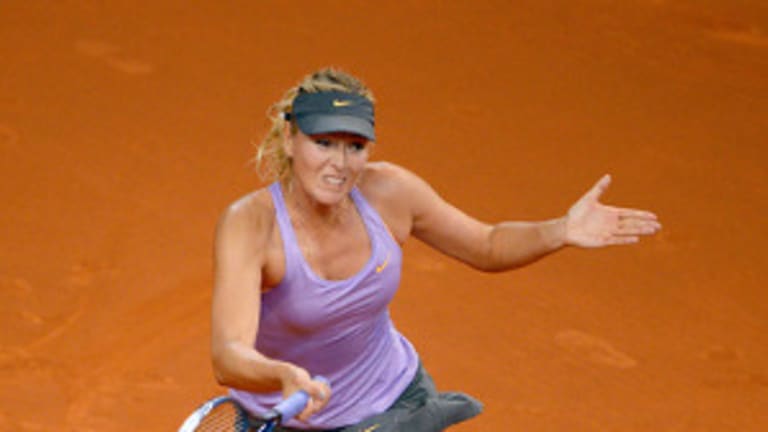Okay, everyone: Here’s a pop quiz as the WTA clay-court season begins to pick up steam. Who among active players has the best clay-court winning percentage on tour?
*1. Maria Sharapova
2. Sara Errani
3. Serena Williams
4. Francesca Schiavone*
Try not to read beyond HERE until you make a choice, or next time I’ll be like one of those magazine writers and make you read to the end of this post and then turn your monitor upside-down to see the correct answer.
Ready?
The honor goes to the winner of Stuttgart last week, Sharapova. Counting that victory—her third in a row at the tournament—she’s now won six of her last eight titles on clay. Let’s leave the cows and ice out of it for once and just acknowledge that hers has been a remarkable transformation.
Sharapova already was the clay-court winning percentage leader even before she bagged this most recent Stuttgart title. Her mark of .818 led (if barely) Serena, who posted an .809; no other women could boast an 80 percent or better success rate. (The three next-best performers before last week were Venus Williams at .763, Jelena Jankovic with .704, and Svetlana Kuznetsova and Li Na, tied with an identical .703.)
Conspicuous by her absence: Schiavone.
This wasn’t a trick question, either. With eight clay-court titles, Sharapova is fourth on the list of active players, although the leader in that category would certainly make for a great trick question—or at least half of a trick question. Anabel Medina Garrigues and Serena are tied for the most clay-court titles with 10, although I expect AMG wouldn’t mind trading her silverware for Williams’. Still, it’s clear that Rafael Nadal isn’t the only Spaniard who knows his way around a clay court.

